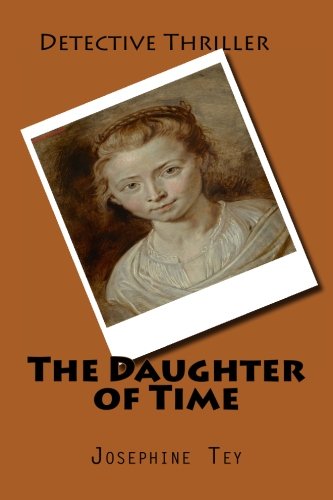

The Crime Writer’s Association listed it as number one on its Top 100 Crime Novels of All Time and the Mystery Writers of America ranked it as fourth. The Daughter of Time was published in 1951 and is the fifth and final novel in Tey’s Alan Grant series. However, Shakespeare certainly played a role in perpetuating Richard III’s reputation as a deformed monster by his portrayal of him in his play Richard III. It turns out that isn’t what this novel is.

March’s task was to read a novel that was a reimagining of a Shakespearean play. I read The Daughter of Time as part of the 2021 Thoughtful Reading Challenge. (This in no way affects the honesty of my reviews!) All commissions will be donated to the ALS Association. As an Amazon Associate I earn a small commission, at no additional cost to you, from qualifying purchases. This post may contain Amazon Affiliate links. It’s a fascinating and very convincing denunciation of the process used to record history as well as a strong case for the defense, but was Richard III innocent? It’s still open for debate.

Grant determines to find out once and for all, with the help of the British Museum and an American scholar, what kind of man Richard III really was and who killed the Princes in the Tower.The Daughter of Time is a novel, written as a police procedural, that attempts to clear Richard III of the murder of his two young nephews, also known as the princes in the tower. Could such a sensitive, noble face actually belong to one of the world's most heinous villains - a venomous hunchback who may have killed his brother's children to make his crown secure? Or could Richard have been the victim, turned into a monster by the the Tudors? Inspector Alan Grant of Scotland Yard, recuperating from a broken leg, becomes fascinated with a contemporary portrait of Richard III that bears no resemblance to the Wicked Uncle of history. Josephine Tey's novel The Daughter of Time is an investigation into the real facts behind the last Plantagenet king's reign, and an attempt to right what many believe to be the terrible injustice done to him by the Tudor dynasty. Richard III reigned for only two years, and for centuries he was villified as the hunch-backed wicked uncle, murderer of the princes in the Tower.

Josephine Tey's classic novel about Richard III, the hunchback king whose skeleton was famously discovered in a council car park, investigates his role in the death of his nephews, the princes in the Tower, and his own death at the Battle of Bosworth.


 0 kommentar(er)
0 kommentar(er)
